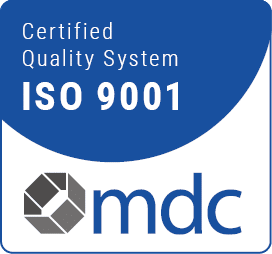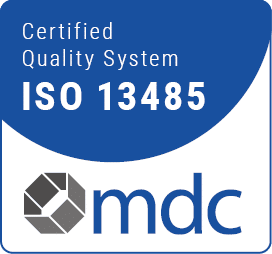FAQs
General questions
General questions
Learn moreOnline shop
Online shop
Learn moreSafety instructions
Safety instructions
Learn moreFrequently asked questions on the topic
ULTRASONIC CLEANING
What is ultrasonic cleaning?
Ultrasound creates the finest cavitation bubbles in the cleaning solution, which thoroughly and gently remove the dirt from the cleaning objects. Ultrasound cleaning also removes dirt from hard-to-reach places and significantly shortens the cleaning time compared to other methods.
Why do I need cleaning additives?
Water without additives usually does not clean at all or only insufficiently. With the use of suitable cleaning preparations, on the one hand the surface tension of the water is reduced for an optimal ultrasonic cavitation effect and on the other hand the contamination is optimally removed with the specific ingredients. The suitable preparation depends on the contamination (e.g. oil, blood, soot, ink etc.) and the object (stainless steel, copper etc.). When reprocessing medical instruments, use cleaning and disinfection preparations specially designed for ultrasound.
Why do I need a heater in the ultrasonic bath?
The optimal cleaning temperature depends on the contamination. Oil, soot and burnt-on residues are best removed in the temperature range of 50-60°C. Blood and tissue residues may only be cleaned at temperatures below 45°C so that the protein contained does not coagulate.
Why do I need a basket in the ultrasonic bath?
What is the purpose of insert vessels?
What is the purpose of a lid on the ultrasonic bath?
What is sweep technology?
With the Sweep technology the ultrasound frequency is slightly varied during cleaning. This results in a very homogeneous sound field and uniform cleaning.
How can I check the function of my ultrasonic bath ?
To do this, one performs a Foil test in which the cavitation clearly visibly perforates an aluminium foil placed in the ultrasonic bath.
Why do I have to degas the ultrasonic bath before cleaning?
Is ultrasound harmful to the user?
At proper application cleaning with ultrasound is not harmful to the user. Do not reach into the cleaning solution when the ultrasound is switched on.
Does an ultrasonic cleaning device need to be maintained, is there wear and tear?
Can I use deionised water in my ultrasonic bath?
Pure deionised water has a very high surface tension and causes damage to the stainless steel tank during ultrasonic operation. . When used with a suitable cleaning preparation, it is possible to Deionised water improve the cleaning effect.
Ordering, Cancellation & Assistance to the
ONLINE SHOP
What payment methods do you offer?
Lorem ipsum dolor sit amet, consetetur sadipscing elitr, sed diam nonumy eirmod tempor invidunt ut labore et dolore magna aliquyam erat, sed diam voluptua. At vero eos et accusam et justo duo dolores et ea rebum. Stet clita kasd gubergren, no sea takimata sanctus est Lorem ipsum dolor sit amet. Lorem ipsum dolor sit amet, consetetur sadipscing elitr, sed diam nonumy eirmod tempor invidunt ut labore et dolore magna aliquyam erat, sed diam voluptua. At vero eos et accusam et justo duo dolores et ea rebum. Stet clita kasd gubergren, no sea takimata sanctus est Lorem ipsum dolor sit amet.
How much are the shipping costs?
Lorem ipsum dolor sit amet, consetetur sadipscing elitr, sed diam nonumy eirmod tempor invidunt ut labore et dolore magna aliquyam erat, sed diam voluptua. At vero eos et accusam et justo duo dolores et ea rebum. Stet clita kasd gubergren, no sea takimata sanctus est Lorem ipsum dolor sit amet. Lorem ipsum dolor sit amet, consetetur sadipscing elitr, sed diam nonumy eirmod tempor invidunt ut labore et dolore magna aliquyam erat, sed diam voluptua. At vero eos et accusam et justo duo dolores et ea rebum. Stet clita kasd gubergren, no sea takimata sanctus est Lorem ipsum dolor sit amet.
How will my shipment be delivered
The optimal cleaning temperature depends on the contamination. Oil, soot and burnt-on residues are best removed in the temperature range of 50-60°C. Blood and tissue residues may only be cleaned at temperatures below 45°C so that the protein contained does not coagulate.
Will I receive an invoice?
Lorem ipsum dolor sit amet, consetetur sadipscing elitr, sed diam nonumy eirmod tempor invidunt ut labore et dolore magna aliquyam erat, sed diam voluptua. At vero eos et accusam et justo duo dolores et ea rebum. Stet clita kasd gubergren, no sea takimata sanctus est Lorem ipsum dolor sit amet. Lorem ipsum dolor sit amet, consetetur sadipscing elitr, sed diam nonumy eirmod tempor invidunt ut labore et dolore magna aliquyam erat, sed diam voluptua. At vero eos et accusam et justo duo dolores et ea rebum. Stet clita kasd gubergren, no sea takimata sanctus est Lorem ipsum dolor sit amet.
Can I cancel an order? If yes, how?
Lorem ipsum dolor sit amet, consetetur sadipscing elitr, sed diam nonumy eirmod tempor invidunt ut labore et dolore magna aliquyam erat, sed diam voluptua. At vero eos et accusam et justo duo dolores et ea rebum. Stet clita kasd gubergren, no sea takimata sanctus est Lorem ipsum dolor sit amet. Lorem ipsum dolor sit amet, consetetur sadipscing elitr, sed diam nonumy eirmod tempor invidunt ut labore et dolore magna aliquyam erat, sed diam voluptua. At vero eos et accusam et justo duo dolores et ea rebum. Stet clita kasd gubergren, no sea takimata sanctus est Lorem ipsum dolor sit amet.
wichtige informationen &
SAFETY INSTRUCTIONS
Testing the electrical safety of ultrasonic baths and homogenisers
Do not use flammable liquids in ultrasonic baths!
For all BANDELIN ultrasonic baths, it is prescribed in the relevant documentation not to use flammable, explosive and non-aqueous liquids or azeotropic mixtures directly in the stainless steel oscillating tank.
Exception:
If the sonication is carried out indirectly in the insert cup or in the insert tray, the use of small quantities of flammable liquids in compliance with the
DGUV Information 213-850
(Safe working in laboratories - Fundamentals and guidance)
TRGS 526
(Technical Rules for Hazardous Substances)
DGUV Regulation 109-010
(Guidelines for equipment for cleaning workpieces with solvents)
DGUV Regulation 113-001
(Explosion protection regulations)
The user himself is responsible for the current versions of these instructions. No claim to completeness.
SONOREX ultrasonic baths do not comply with these guidelines.
Service life of working solutions of disinfection and cleaning preparations
The service life of a used solution depends on the load.The load of a used solution varies individually and cannot be standardised. To be on the safe side, a new solution should be prepared daily according to the following quotations. According to the disinfectant list of the VAH/1 the following is stated:
"As a rule, disinfectant solutions must be renewed at least every working day. Longer periods of use are only permissible if the manufacturer can prove by expert opinion that the efficacy is maintained over a longer period of time even in the case of visible contamination with blood".
For STAMMOPUR DR 8 and STAMMOPUR 24, the service life of the used solution under load, which has been proven by experts, is 3 days./2.
Household cleaners Household cleaners are unsuitable for ultrasonic cleaning!
Ultrasonic cleaning is carried out in stainless steel oscillating tanks with aqueous cleaning liquids. The optimum effect of the ultrasound requires the use of suitable cleaning preparations ⇒ STAMMOPUR or TICKOPUR preparations.
Some household cleaners, e.g. commercially available dishwashing detergents, are not suitable for ultrasonic cleaning because they may contain chloride ions. Chloride ions destroy the passive protective layer of the stainless steel surfaces in the oscillating tank and are thus the cause of corrosion. Dark holes the size of a pinprick develop, so-called pitting /1, 2/.
In addition to cleaners containing chloride ions, rust deposits, so-called extraneous rust, salty water, acidic dirt and acids on the stainless steel surfaces can also be the cause of pitting corrosion. Extraneous rust is caused by external disturbing factors, such as
- Rust particles from the water pipe system or from rusty cleaning material,
- Metal parts remaining on the stainless steel surface, such as screws, metal chips, metal dust, etc.

Do you have any further questions?
Write to us!
If you have any further or specific questions regarding individual products, processes or need advice, you are of course also welcome to send us a message via the contact form or call us directly.



